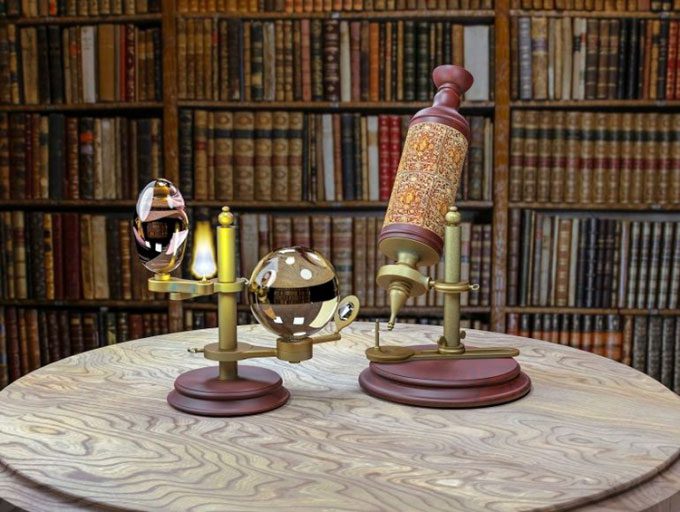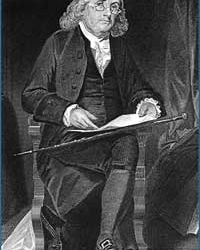Discovering cells and many remarkable achievements in mathematics and mechanics, Robert Hooke passed away from dwarfism and never married.
Robert Hooke was born on July 18, 1635, on the Isle of Wight, an island off the southern coast of England. As a child, suffering from severe smallpox and too frail to attend school, he spent most of his childhood drawing in his bedroom. At that time, Hooke also demonstrated incredible mechanical skills by crafting wooden clocks and toy boats equipped with cannons.
In his teenage years, after his father passed away, Hooke moved to London and enrolled at Westminster School, where he received a solid academic education in Latin, Greek, and Hebrew, while also training to become an instrument maker. From there, he discovered that his talents extended beyond painting, according to ThoughtCo.

A portrait of Robert Hooke based on descriptions from friends. (Image: Rita Greer)
Hooke excelled in many fields, but his most famous discovery was the identification of cells in 1665. This achievement was made possible by a microscope he improved based on earlier compound microscopes. He arranged three lenses in sequence to magnify images and added light for better observation.
These improvements allowed Hooke to see “the wonders” when he placed a piece of cork under the microscope. The scientist detailed his observations of this tiny, unseen world in his book, Micrographia. To Hooke, the cork appeared to be made up of small pores, which he called “cells,” according to National Geographic.
“I could clearly see that all were perforated and porous, like a honeycomb, but its pores were not uniform. These pores, or cells, were indeed the first super tiny holes I had ever seen, and perhaps no one had ever seen them before, as I had not encountered any literature mentioning them previously,” Hooke wrote in Micrographia.
The book Micrographia is also filled with intricate sketches of the tiny world Hooke observed, from six-sided snowflakes to mold spores, which, when viewed closely, resembled tulips swaying in the wind.

Robert Hooke’s improved microscope. (Image: Libreria Bardon)
He was also the first to examine various types of fossils under a microscope and suggested in Micrographia that fossils formed when certain species were pushed to a place where they were buried by mud, clay, petrified water, or other substances due to catastrophic events like floods or earthquakes.
His microscopic observations also revealed how mosquitoes and lice suck blood.
Hooke discovered a law of physics that was later named after him. Hooke’s Law states that the force needed to extend or compress a spring is proportional to the distance it is stretched.
Following this success, he improved five major meteorological instruments, including barometers, thermometers, water microscopes, rain gauges, and anemometers, according to Live Science.
In the field of astronomy, Hooke discovered the fifth star in the “trapezium” of the Orion constellation in 1664. While observing the night sky, he analyzed planets and was the first to hypothesize that Jupiter rotates on an axis. Later, in the 19th century, his sketches of Mars were used to calculate the rotation speed of the celestial body.
Death and Never Married
Hooke kept a diary in which he discussed his health issues extensively. Although it lacks the literary value of Samuel Pepys’ diary, it described many details of daily life in London after the Great Fire. Hooke passed away on March 3, 1703, suffering from dwarfism and several other unnamed ailments. He never married and had no children.
Hooke was a distinguished scientist, but he was also known to be difficult and impatient, which hindered his success in mathematics. Many of Hooke’s ideas inspired others, later completed by individuals both within and outside the Royal Society of London, such as pioneering microbiologist Antoni van Leeuwenhoek (1632 – 1723), geographer William Dampier (1652 – 1715), geologist Niels Stenson (1638 – 1686), and even Isaac Newton (1642 – 1727), with whom he had conflicts.
When the Royal Society of London published Newton’s Principia in 1686, Hooke accused Newton of plagiarism. According to Science Focus, Newton’s new laws explained why “all celestial bodies have gravitational forces directed toward their centers,” but Hooke had written these words decades earlier.
Newton denied any wrongdoing, but many believe he may have transformed Hooke’s accurate descriptions into a mathematical model. This incident affected Newton to the extent that he delayed publishing his book Optics until after Hooke’s death.





















































